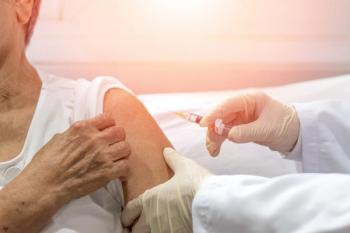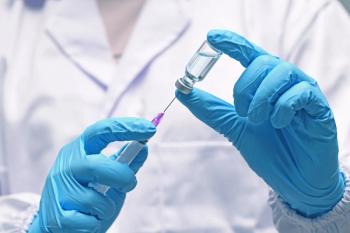Use of continuous glucose monitoring (CGM) may reduce the likelihood of developing diabetic retinopathy (DR) and proliferative diabetic retinopathy (PDR) in adults with type 1 diabetes (T1D), according to results of a study published in JAMA Network Open.1
DR is the leading cause of irreversible blindness in the working-age population in the world. Although elevated hemoglobin A1c (HbA1c) and longer duration of diabetes are understood as major risk factors for developing the diabetic eye complication particularly among patients with T1D, outcomes of diabetes technology use in DR are not well established.
Key Takeaways
- CGM use, both in combination with an insulin pump and on its own, was associated with a lower odds of DR and PDR development among patients with T1D.
- Researchers believe the advantages of CGM, particularly the device’s ability to capture in-depth insights on fluctuations in blood glucose levels and glycemic variability, may explain the positive outcomes observed in the current study.
- Further research is needed to explore how specific CGM data and newer technologies can influence long-term complications in T1D patients.
Previously, the landmark Diabetes Control and Complications trial revealed that without intensive insulin therapy—such as that offered by current diabetes technology—almost half of all patients with T1D developed DR within an average span of 6.5 years.2 These results demonstrate a need for effective management options among this population.
To supplement this knowledge gap and address this need, investigators assessed whether the use of CGM, insulin pump, or a combination of the 2, is associated with a decreased risk of developing DR, including PDR, in patients with T1D.
In total, 550 adults with T1D who had consultations at both the Johns Hopkins Endocrine and Diabetes Center and the Wilmer Eye Institute in Baltimore, Maryland, from 2013 to 2021 were recruited for the current retrospective, electronic medical record-based longitudinal study. Participants had a median duration of diabetes of 20 (IQR, 10-30) years and median HbA1c of 7.8% (IQR, 7.0%-8.9%). Among the patient population, 62.7% used CGM, 58.2% used an insulin pump, and 47.5% used both. At any point during the study, 44% of participants had DR.
Within the study, investigators conducted 2 analyses. The first examined the association of diabetes technology use with DR among patients who had visits in both the diabetes center and the ophthalmology clinics and were using CGM at the start of the study period or started CGM during the active study period (before the last ophthalmology encounter or before a diagnosis of DR) were included.
READ MORE: CGM Education Needed to Promote Equitable Diabetes Care
The second analysis was longitudinal and assessed the progression of DR. Patients who had at least 2 consecutive visits in the ophthalmology clinic and did not have PDR at the initial ophthalmology visit were included.
The primary outcome was the development of DR or PDR, and the secondary outcome was the progression of DR for patients with more than 1 ophthalmology encounter in the longitudinal cohort.
Overall, investigators found that CGM use—with or without insulin pump use—was significantly associated with a decreased likelihood of developing DR (OR, 0.52; 95% CI, 0.32-0.84) and PDR (OR, 0.42; 95% CI, 0.23-0.75), even after adjusting for HbA1c levels. However, insulin pump use on its own did not show an independent association with improved DR outcomes.
“In this cohort, CGM use with or without an insulin pump was associated with a lower odds of PDR development, and since most irreversible blindness associated with DR is due to PDR complications, such as tractional retinal detachment and neovascular glaucoma, these findings suggest that CGM use could potentially impact visual outcomes and mitigate permanent blindness from DR,” wrote investigators.1
The emergence of CGM use in recent decades has revolutionized the management of T1D, equipping users with in-depth, real-time insights on glucose data. Researchers believe these advantages of CGM, particularly the device’s ability to capture data on fluctuations in glycemic variability commonly observed in patients with T1D, may explain the positive outcomes observed in the current study.
“Glycemic variability is a known risk factor associated with diabetes complications, including retinopathy. It is thought that larger fluctuations in blood glucose result in damage through mechanisms of oxidative stress, activation of inflammation and coagulation, endothelial cell damage, and other related responses,” wrote investigators in a commentary of the original study.3 "Given that individuals with similar Hba1c levels may have very different glucose profiles, the association of CGM use with reduced odds of [DR] may be related to the ability of CGM to capture more detailed aspects of a patient’s glucose trends, including short-term glycemic variability.”
The current study’s findings on CGM’s positive impact on DR development suggest its effectiveness in managing T1D and underscores the need for wider integration of CGM data into eye care assessments among the patient population. Further research, investigators recommended, should focus on how CGM-specific parameters, such as time-in-range and glycemic variability, as well as hybrid closed-loop insulin systems, affect long-term complications among patients with T1D.
READ MORE: Continuous Glucose Monitoring Resource Center
References
1. Liu TYA, Shpigel J, Khan F, et al. Use of diabetes technologies and retinopathy in adults with type 1 diabetes. JAMA Netw Open. 2024;7(3):e240728. doi:10.1001/jamanetworkopen.2024.0728
2. Diabetes Control and Complications Trial (DCCT): results of feasibility study. The DCCT Research Group. Diabetes Care. 1987;10(1):1-19. doi:10.2337/diacare.10.1.1
3. Everett EM. Leveraging continuous glucose monitors to reduce the risk of diabetic retinopathy. JAMA Netw Open. 2024;7(3):e240718. doi:10.1001/jamanetworkopen.2024.0718



















































































































































